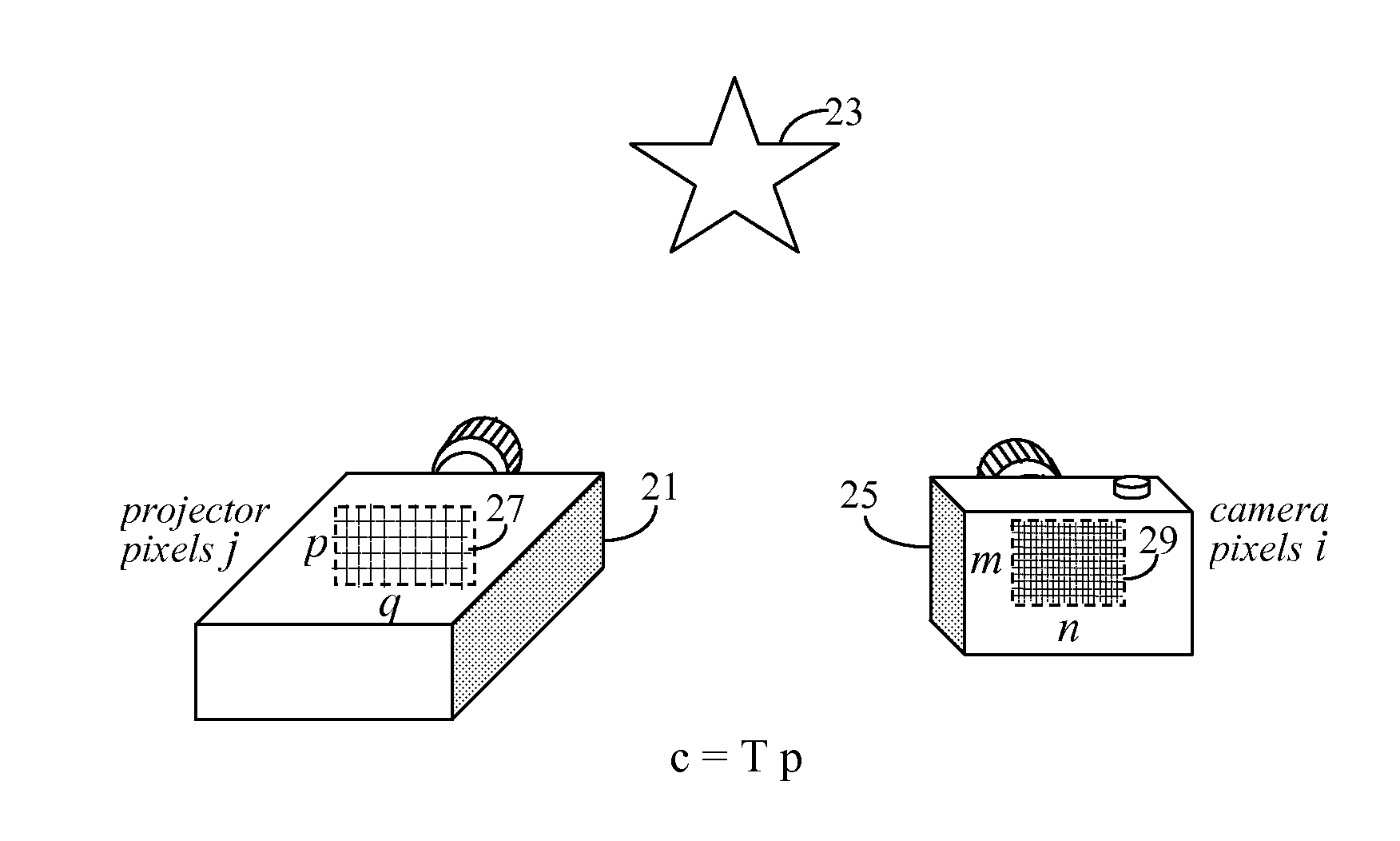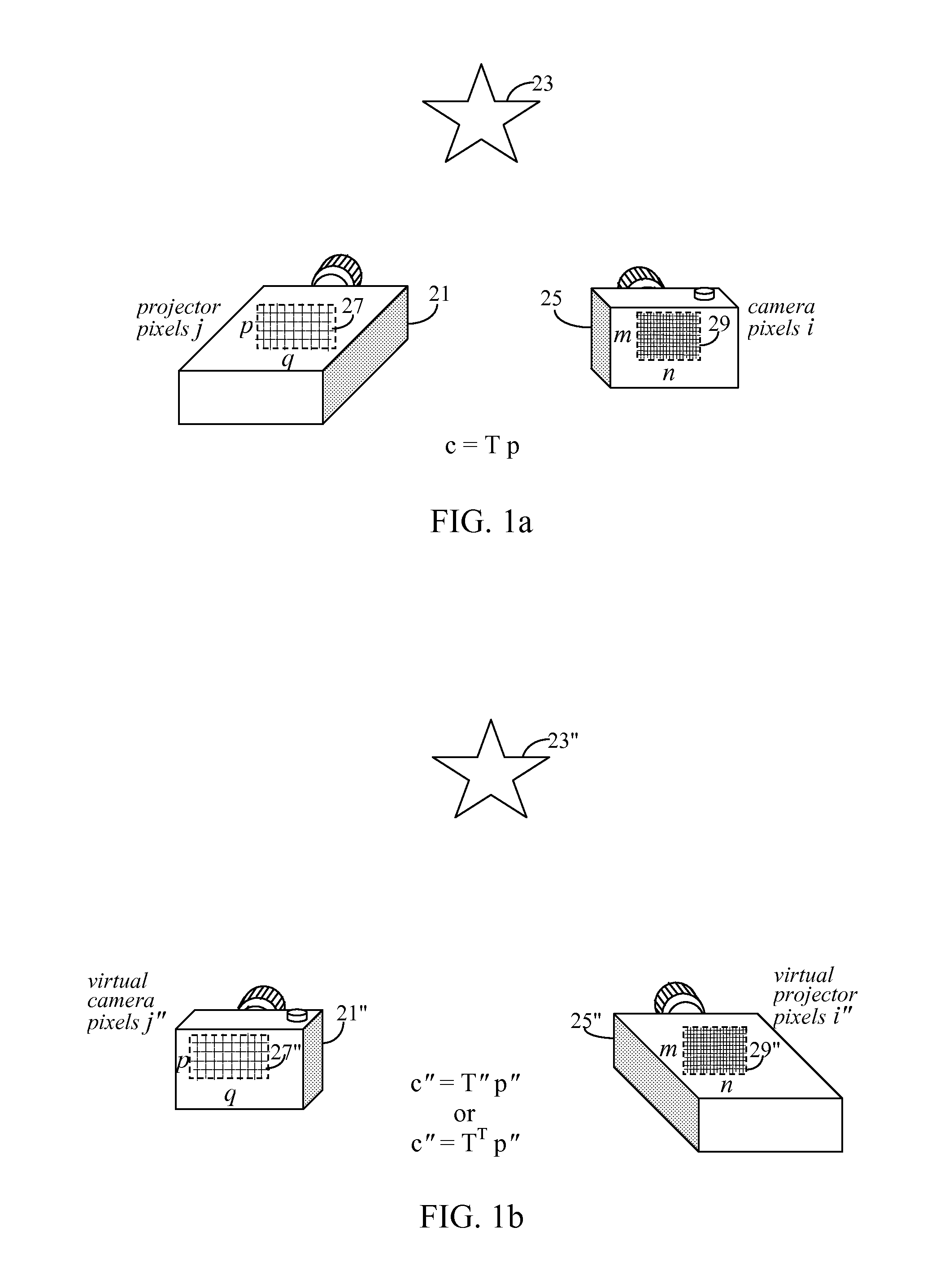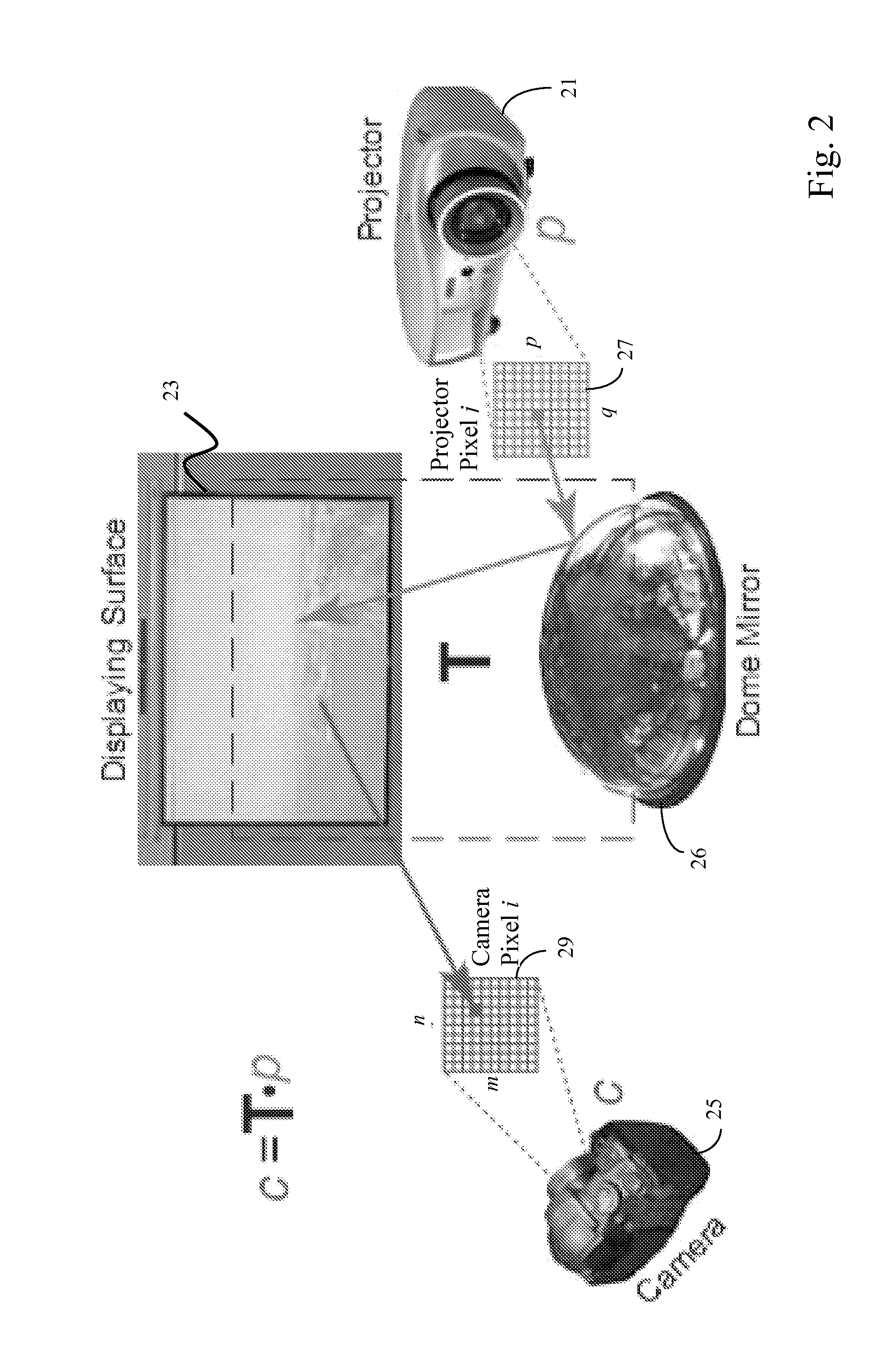Catadioptric Projectors
- Summary
- Abstract
- Description
- Claims
- Application Information
AI Technical Summary
Benefits of technology
Problems solved by technology
Method used
Image
Examples
Embodiment Construction
[0051]The recent introduction and rapid adoption of consumer digital projectors has redefined the landscape for displaying images and videos. To model projection geometry, a projector-camera system (i.e. a ProCam system), can be setup and the projector can be treated as a virtual pinhole camera. Classical perspective geometry can then be directly applied to analyze the projection process.
[0052]The basic construct of a projector-camera system can be better understood with reference to FIGS. 1a and 1b. In FIG. 1a, an imaging setup may include a real projector 21 and a real camera 25. Real projector 21 is preferably a digital projector and has an imaging element including an imaging projection array (i.e. projector pixel array 27), consisting of p rows and q columns of individual imaging projection elements (i.e. projector pixels j). Projector pixel array 27 is internal to real projector 21, but for discussion purposes, it is shown as crossed lines within a dotted square on projector 2...
PUM
 Login to View More
Login to View More Abstract
Description
Claims
Application Information
 Login to View More
Login to View More - R&D
- Intellectual Property
- Life Sciences
- Materials
- Tech Scout
- Unparalleled Data Quality
- Higher Quality Content
- 60% Fewer Hallucinations
Browse by: Latest US Patents, China's latest patents, Technical Efficacy Thesaurus, Application Domain, Technology Topic, Popular Technical Reports.
© 2025 PatSnap. All rights reserved.Legal|Privacy policy|Modern Slavery Act Transparency Statement|Sitemap|About US| Contact US: help@patsnap.com



